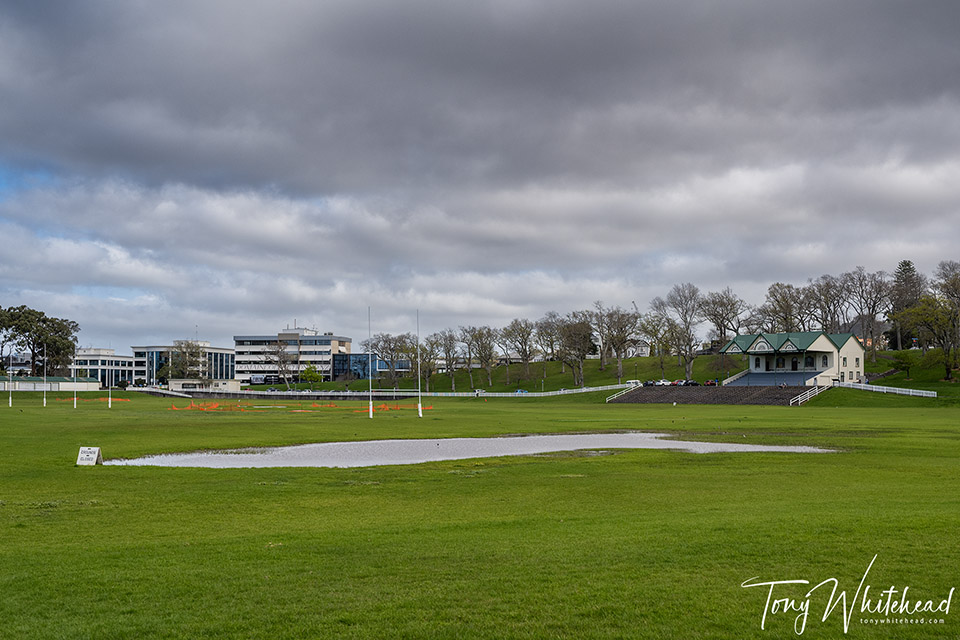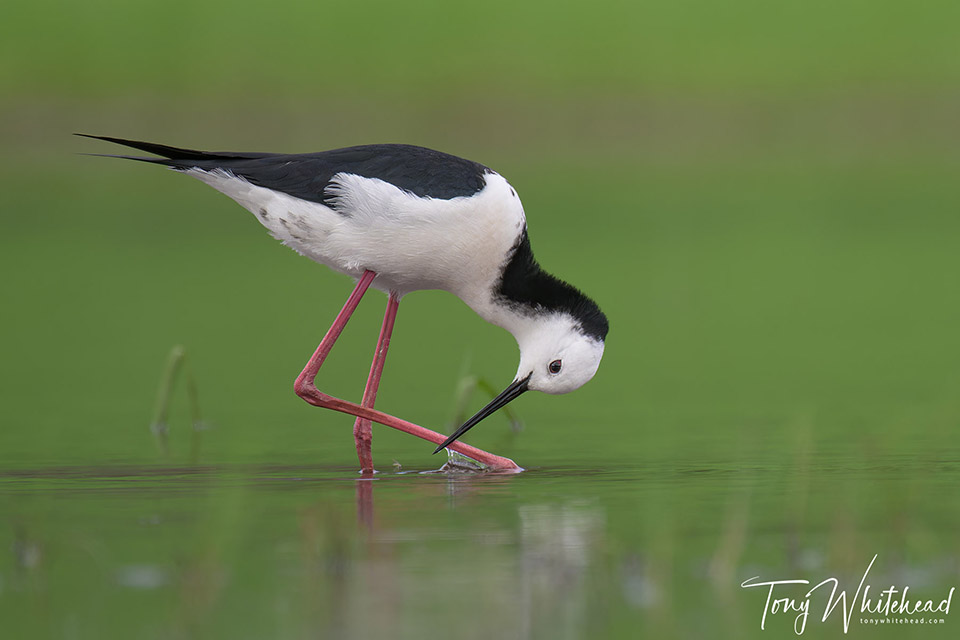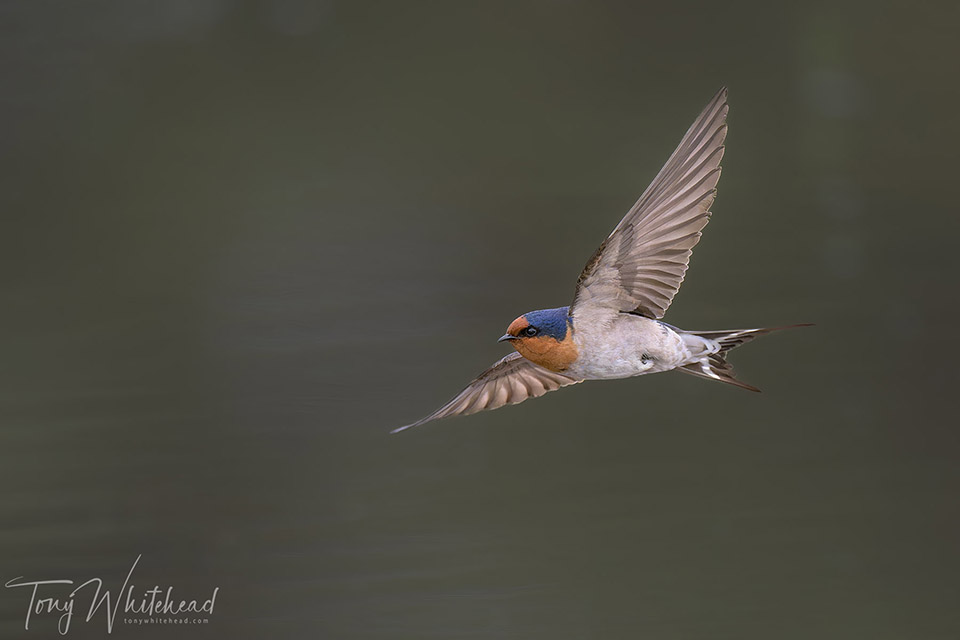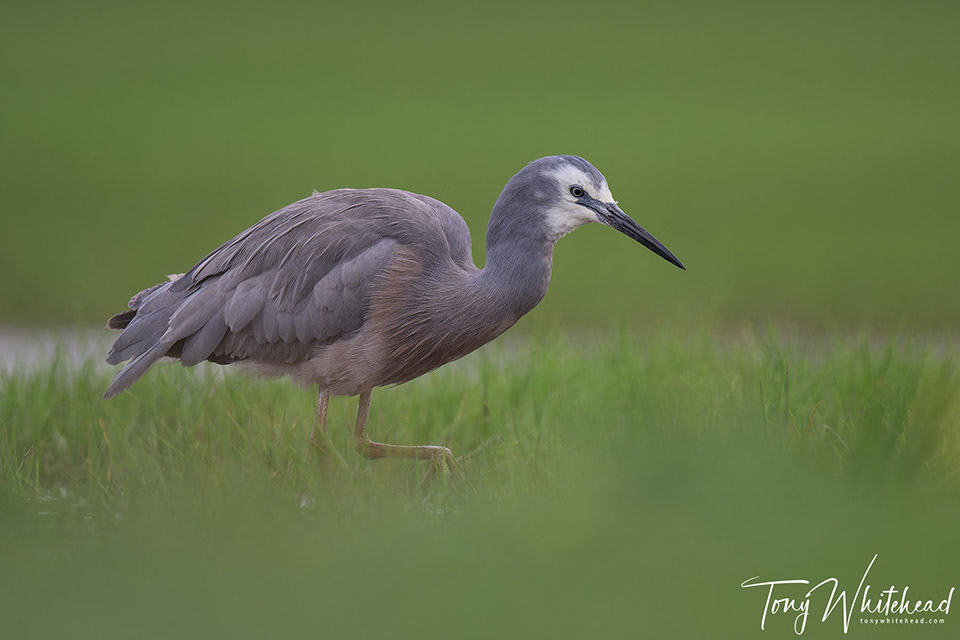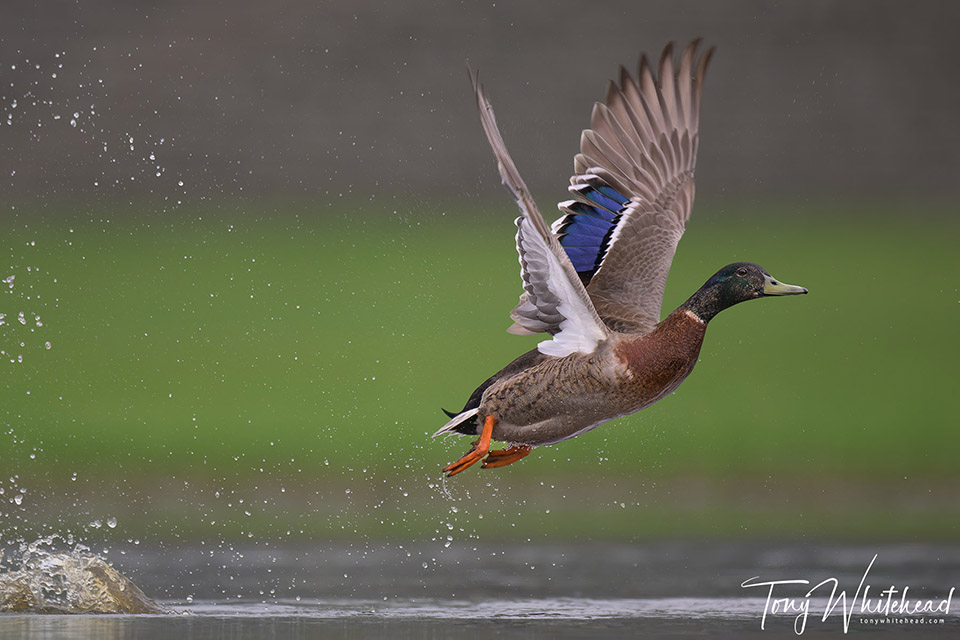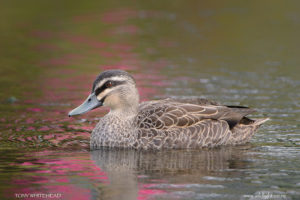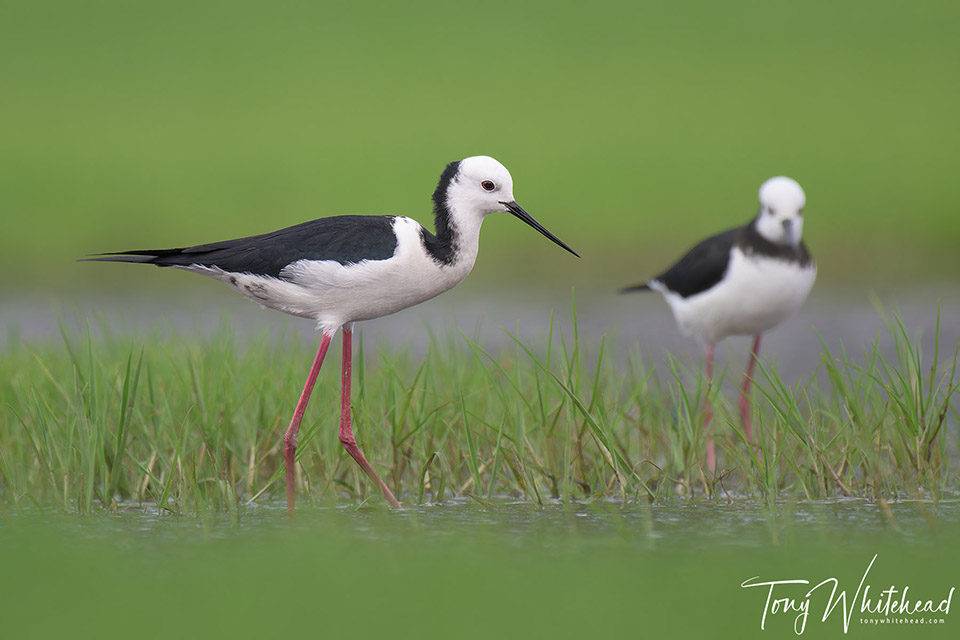
A recent trip to Auckland to see the NZ Geographic Photographer of the Year Exhibition and the Robin Morrison exhibition at the Auckland Museum was made special by an unexpected encounter. Prolonged wet weather has flooded the fields of the Auckland Domain resulting in puddles large enough to be ponds and sustained enough to develop a wetland ecosystem.
It was not unexpected to see Warou/Welcome Swallows hawking insects over the ponds but a lovely surprise to encounter Poaka/Pied Stilts and Matuku moana/White-faced Heron exploiting the food source.
Normally the Domain is a mix of sports fields with this area cricket field in the summer and rugby fields in the winter. The flood ing has closed the field and it is lovely to see how rapidly nature fills a niche that is normally a mowed field and creates a thriving community of aquatic life sufficient to attract birds.
The Warou/Welcome Swallows were especially numerous swooping low over the water. The numbers were so dense that it was hard to get images of the stilts that were not photobombed by a swallow.
Normally when visiting central Auckland, street photography is my priority and to this end I had my Nikon Z7 with Nikkor Z 35mm f1.8 (it had been a close call between that and my Fuji X100F!) and would normally not have my bird photography gear. Fortunately we had planned an overnight stop at Pūkorokoro/Miranda on the way home so the Nikon Z9 and Nikkor Z 800mm f6.3 and 1.4x teleconverter had come with. It was a short walk back to our motel to get the necessary gear and Edin and I could share the gear and spend a bit of happy time photographing wetland birds in central Auckland!
We started with the stilts and swallows but were soon joined by a Matuku moana/White-faced Heron that hunted successfully along the margins and was quite relaxed at our presence.
I was almost as surprised to see it fly as I had been to see the stilts as they are often quite wary. Presumably in this urban environment they are more comfortable with the human traffic than in more remote locations.
The final subject was the least surprising of all as the main pond in the Domain has a good population of ducks. 2 mallard drakes flew in after circling repeatedly but didn’t remain long, obviously preferring to head back to the main pond and the hope of handouts from humans.
Sometime unexpected opportunities are the best. Anticipation is often exciting but exposes us to the risk of disappointment if expectations are not met. Serendipitous encounters in unexpected places are lovely surprises.
A dryer spell of weather has reduced the ponds in size and I read in the paper recently that pumps are going to be used to drain the remaining water so the fields can be used again.
Photos with Nikon Z9 and Nikkor Z 800mm f6.3 VR S
